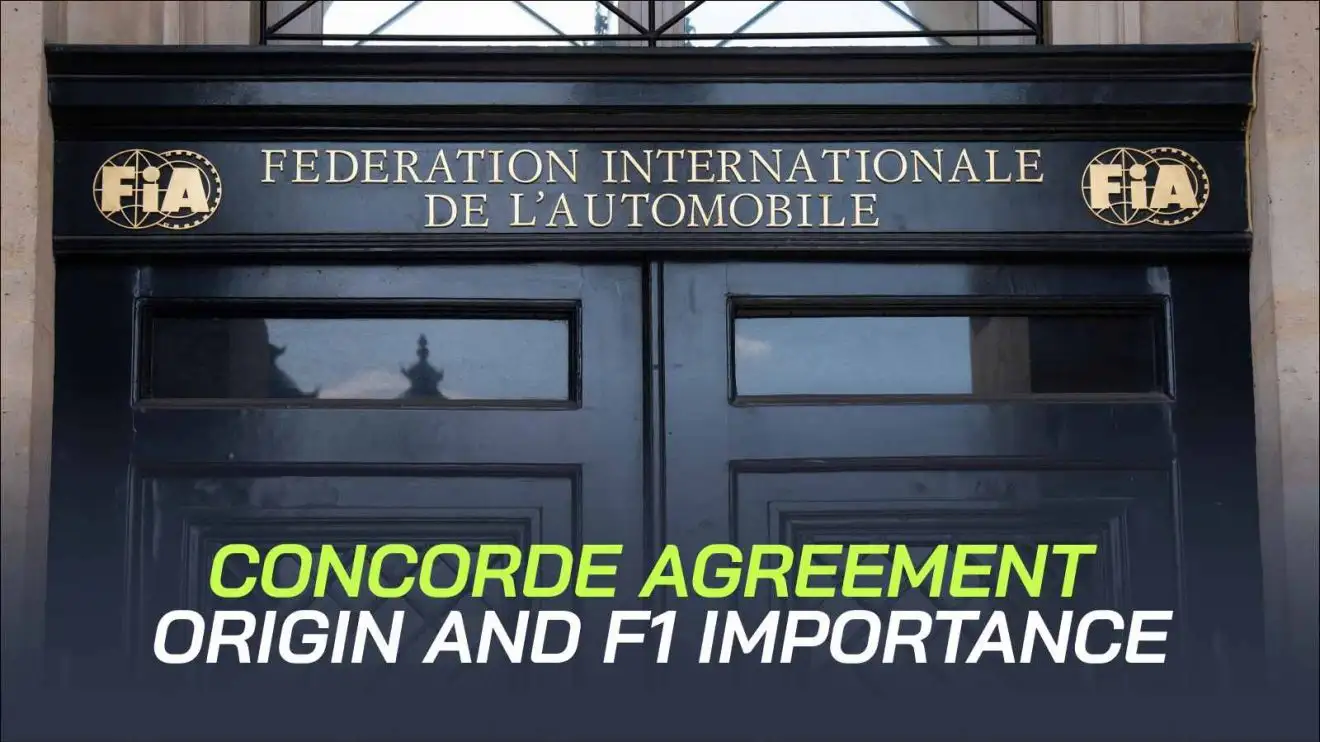Concorde Agreement explained: Who signs it, what it means and why it’s vital for F1
02 Mar 2025 2:37 PM

The Concorde Agreement is a vital document agreed between the FIA, F1 teams and FOM.
The 2025 season is set to see another version of the Concorde Agreement signed, which is a crucial document in the world of Formula 1.
It contractually binds the sport together thanks to those who sign it, and potentially decides what the future of Formula 1 may look like – but exact details of the document remain secret.
Concorde Agreement: What is it and who signs it?
The Concorde Agreement is a contract agreed and signed between the Formula 1 teams, the FIA and Formula One Management [FOM], overseen by series owners Liberty Media, over the terms of how Formula 1 goes racing.
This agreement is the source of financial stipulations such as prize money for Constructors’ Championship finishing positions, entry fees, the split in broadcast and other revenue among teams and much more.
In the most recent Concorde Agreement, which came into effect in 2021, the sport’s first budget cap was introduced, as well as what was widely reported to be a $200m anti-dilution payment as an entry fee for any new teams entering the sport, to be split equally among the 10 teams already on the grid, in order to protect the value of those already in Formula 1.
The current Concorde Agreement covers the 2021-2025 seasons, and when negotiated, all parties will agree on the length of the next version of the deal, and the teams must remain committed to the Formula 1 World Championship for the period under which the contract is signed.
Contractual sporting stipulations are also believed to be held within the Concorde Agreement, too, such as the requirement for teams to attend and compete in every race – agreed in the very first version of the contract.
More about Formula 1 explained on PlanetF1.com
👉 FIA Super Licence explained: How drivers can reach the magic 40-point mark to reach Formula 1
👉 F1 jargon decoded: Breaking down what key Formula 1 terms mean
How did the Concorde Agreement start?
The 2026 edition of the Concorde Agreement is due to be the ninth edition signed in Formula 1, with the first coming back in 1981.
The first edition of the Concorde Agreement was signed to effectively signal an end to the dispute at the top of Formula 1 at the time, with FISA [Fédération Internationale du Sport Automobile] and FOCA [Formula One Constructors’ Association] each effectively vying for control of the series.
Commonly known as the FISA-FOCA war, both organisations were at loggerheads in the late 1970s and into the early 1980s with Jean-Marie Balestre, head of FISA, on one side, and head of FOCA and Brabham team owner, Bernie Ecclestone, alongside legal counsel and future FIA head, Max Mosley, on the other.
While there were multiple reasons for the origins of the dispute between the two entities, in its most basic terms, FOCA, acting as a de facto union of many privateer Formula 1 teams, was seeking a better financial deal from FISA on behalf of the constructors, and claimed FISA was acting with bias in favour of the major manufacturers of the time.
There were several key flashpoints in this dispute, not least at the 1980 Spanish Grand Prix, when FISA fined FOCA-affiliated drivers who did not arrive at previous drivers’ briefings in Belgium and Monaco, and those affected were reportedly threatened of having their racing licences revoked if fines were not paid.
It was at the insistence of Spain’s King Juan Carlos that the race went ahead, without FISA sanctioning, making it a non-championship event.
While not the end of the FISA-FOCA war entirely, with other major moments such as the FOCA team boycott of the 1982 San Marino Grand Prix, the first ever Concorde Agreement quelled some of the tensions at the time.
Agreed between FISA and FOCA, while the terms remained confidential, it was widely reported that every FOCA team that signed the deal agreed to appear at every race, while FISA were believed to have agreed to a more equitable distribution of funds, plus a timetable to allow teams to prepare for regulation changes, among other clauses.
Since the first edition of the agreement expired in 1987, new versions have been drafted at different intervals to agree updated terms under which Formula 1 goes racing.
What will be in the next Concorde Agreement?
It is highly unlikely exact details will be released from the next version of the Concorde Agreement, though drafts of the 2026 deal were being circulated as early as 2024 in order for a new agreement to take effect.
While the agreement has not yet been confirmed at time of writing, Mercedes team principal Toto Wolff shares the ambition of the sport to grow together as a whole.
He told media including PlanetF1.com upon receiving a draft at the 2024 Emilia-Romagna Grand Prix: “I think we got the basic terms on how Formula 1 sees the next five-year term playing out.
“There’s some goodness in there. There’s a few things which we will discuss, pros and cons, and of course there will be some some negotiations, but fundamentally we all want to achieve the same: to grow the sport.
“That means the bottom line grows. And if the bottom line grows, the teams and the sport benefit.”
Read next: Explained: F1’s points system and how drivers earned points in the past